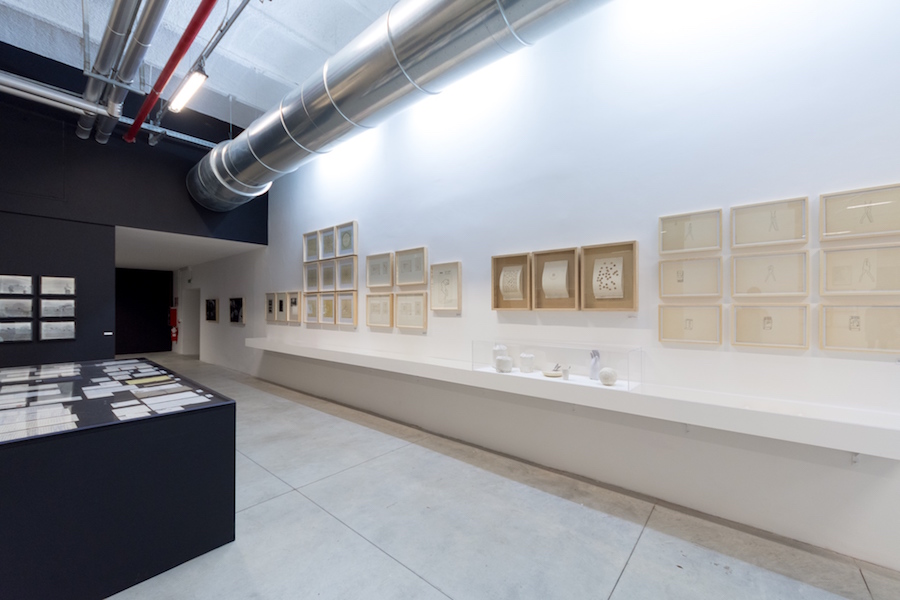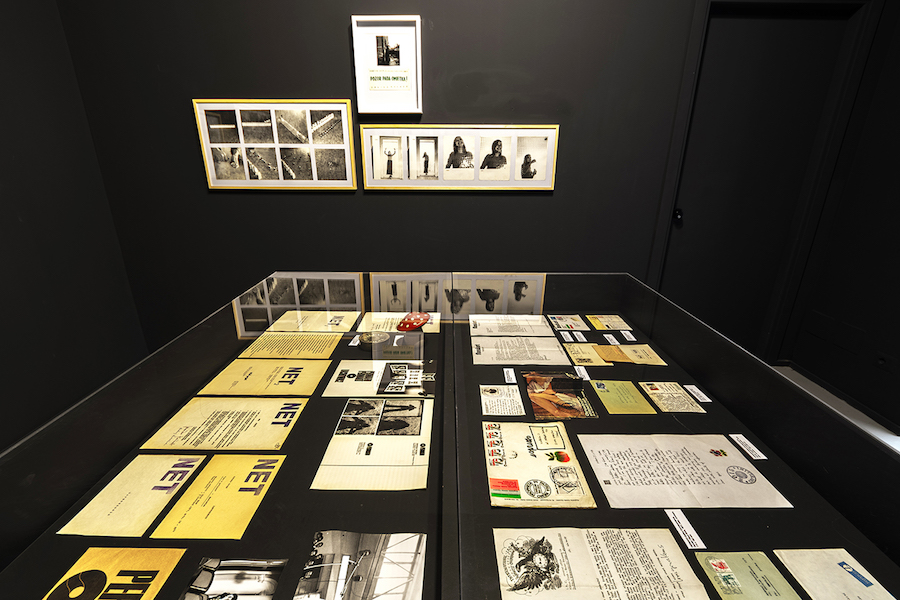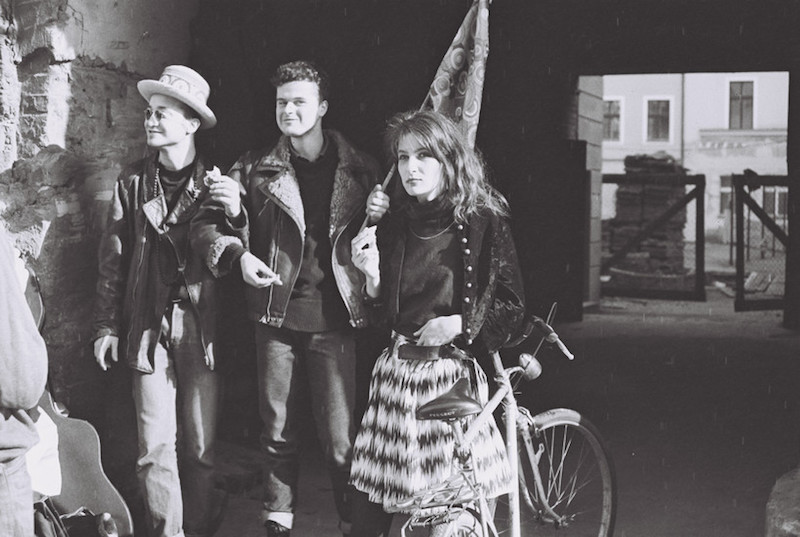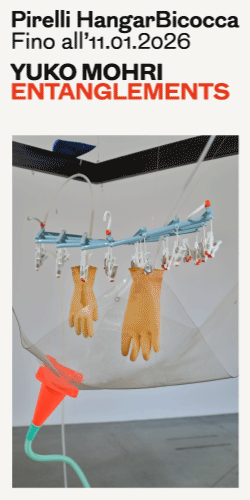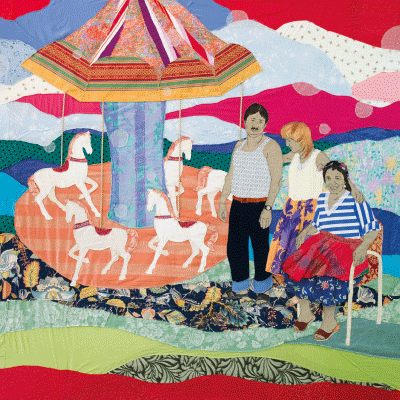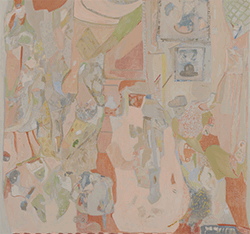
THE WILD WEST. A HISTORY OF WROCLAW’S AVANT-GARDE
06/16/2016 – 08/15/2016
Curators: Michal Duda, Anka Herbut, Anna Mitus, Pawel Piotrowicz, Adriana Prodeus, Sylwia Serafinowicz, Piotr Stasiowski
MSU – Museum of Contemporary Art di Zagabria
Wroclaw — a city in the Recovered Territories, which before the second world war had nearly one million inhabitants, for decades could not be rebuilt after being destroyed in the Siege of Breslau. It was in this fascinating “Wild West”, situated on the edge of a communist country at the intersection of different cultures, where local artists created their own original microcosm in the spirit of freedom and independence. They conducted bold experiments and established international cooperation with partners from both sides of the Iron Curtain.
The exhibition presents artworks, films, documentary photographs, objects and audio recordings from the fields of the visual arts, architecture, urban planning, theatre, film, design, and everyday life in Wroclaw from the 1960s through today. Its historical narrative begins in the mid-1960s when two great artists-visionaries settled down in the city: the founder of the Laboratory Theatre Jerzy Grotowski, and Jerzy Ludwinski, the author of the pioneering concept of the Museum of Current Art in Wroclaw and founder of the Mona Lisa Gallery. Until the end of the 1970s, Wroclaw was the capital of the Polish neo-avant-garde, and in the following decade – the martial law era – one of the main centres of counterculture and anti-system art. Today’s notion of Wroclaw as an open city – a “meeting place” – owes a lot to those experiences, which included international encounters during the successive editions of the Jazz on the Oder Festival, the Kalambur Theatre’s Open Theatre Festival, or the workshops organised by the Laboratory Theatre. In the 1980s, this legacy was enriched by the practice of the Orange Alternative, the music performances of Kormorany, and the happenings of the Luxus collective.
The exhibition consists of the following parts: Jerzy Ludwinski (critic and art theorist, founder of the Mona Lisa Gallery and co-organiser the Wroclaw ’70 Visual Arts Symposium); Wroclaw ’70 Visual Arts Symposium (the most important manifestation of conceptual art in Poland); Wroclaw – an open city (collaborations with other artists and various hosting); Theatre and performing arts (theatre experiments and festivals); Women’s Art exhibition, 1978, Jatki Gallery, Wroclaw (the first feminist exhibition in Poland); The images of Wroclaw – FEATURE FILMS STUDIO IN WROCLAW (cult films from the so called Polish school); Dissidence in Wroclaw in the 1980s (period of critical circumstances in the country); The new media in Wroclaw (photography and video); Zgorzelec Open-air Festival (early emphasis on environmental topics), Concrete poetry and in the end the historical and the contemporary context of the city and the activities of its artists.
NON-ALIGNED MODERNITY / MODERNITÀ NON ALLINEATA
Eastern-European Art and Archives from the Marinko Sudac Collection
Curated by Marco Scotini, in collaboration with Lorenzo Paini and Andris Brinkmanis
FM Centro per l’Arte Contemporanea, Milan
27 October – 23 December 2016
FM Centro per l’Arte Contemporanea’s exhibition program continues with a second event, once again concerning an artistic scene that is less known and yet to be discovered. Despite the international prestige of some of its representatives, this is an almost submerged reality but one that represents an exceptional contribution to the history of art in the second half of the twentieth century.
Non-Aligned Modernity not only tackles art in the nations of Eastern Europe but attempts to investigate an anomalous and anything but marginal chapter in their history, which cannot be framed within the ideology of the Soviet Bloc nor within the liberalistic model of Western democracies. Rereading the artistic scene of the ex-Yugoslavia of the Cold War period, throughout the first thirty years that go from the beginning of the 1950s through the 1980s, effectively means facing up to a constitutional and unshakeable cultural difference. This permits us to reopen the history of art archives, chipping away at and deconstructing the historiographic canonization proposed by Western modernity in its pretense of universalism, neutrality and aesthetic autonomy.
With Non-Aligned Modernity, FM Centro per l’Arte Contemporanea aims to continue in its investigation of the cultural multiplicity of modernity, each time in relation to a given geo-political context in which this is declared as ‘local’ modernity. On this occasion, it is achieved through a relevant private collection of central European art under Socialism: the Marinko Sudac Collection, anomalous and ‘non-aligned’ with the idea of classic collecting in its own right, it includes not only works of art, but also archives and documentary material of extraordinary historiographic importance. This is a collection that – over the years – has set itself the task of retracing radical, artistic trends within a coherent avant-garde line in the areas of Central-Eastern Europe.
The Non-Aligned Modernity exhibition aims to re-read the cultural and artistic spaces of the ex-Yugoslavia as a complex and interstitial workshop, suspended between the East and the West but not entirely possible to assimilate with either of the two areas, thereby allowing us to overcome the classic dichotomy between one Europe and the other. With the Yugoslavian model, the difference is seen, substantially, as being not just between the East and the West but also within the so-called East itself.
In fact, since the very origins of the Socialist Federal Republic of Yugoslavia, progressive modernist ideas saw Socialism as the radical and experimental expression of these same trends. For this reason, immediately following 1948, after Tito’s breakup of the alliance with the Soviet Union and Yugoslavia’s withdrawal from Eastern Bloc, there was evidence of a distancing from the doctrines of Socialist Realism. Yugoslavia was the first reality in the East to present abstract trends in international, artistic events and to allow modernist abstractism to obtain a quasi-official status, both through the monuments to the revolution spread around almost everywhere and as a result of the national representative pavilions. Examples of this are the works of the sculptor Vojin Baki? and the Group EXAT 51. However, it was still, without a doubt, in Yugoslavia that the first manifestations of conceptual art in Central Europe appeared, thanks to a constellation of figures who were ‘non-aligned’ and outside the official art system taking the name of the Gorgona Group which has few equivalents both in the East and the West.
With the passage to a politics of worker autonomy in the 1950s through the reforms to the market in 1965, Conceptual Art also became more critical and developed in other cultural centers, not only in Zagreb but also in Ljubljana, Belgrade and Novi Sad throughout the 1970s, with figures of primary importance beginning with the experiences of the avant-garde, Slovenian collective OHO Group. Urban interventions, graphic contaminations, performances and videos were at the center of the practices of the Group of Six Artists, as well as those of Bosch + Bosch, KOD, Verbumprogram, etcetera. To these are added the individual significance of some figures that have, by now, achieved international fame such as Sanja Ivekovi?, Marina Abramovi?, Mladen Stilinovi?, Goran Trbuljak, Tomislav Gotovac, Vlado Martek and Radomir Damnjanovi? Damnjan.
If it is true that the Yugoslavian phenomenon, in many way, stands apart, it is equally true that in the same 1970s, Conceptual Art saw a vast production in the countries of central Europe: Hungary, Czechoslovakia and Poland, with whom the same Yugoslavian artists had many exchanges and contacts and in which international figures such as Július Koller, Dora Maurer, Milan Grygar, Stano Filko, Rudolf Sikora, Ji?í Valoch and Józef Robakowski worked.
